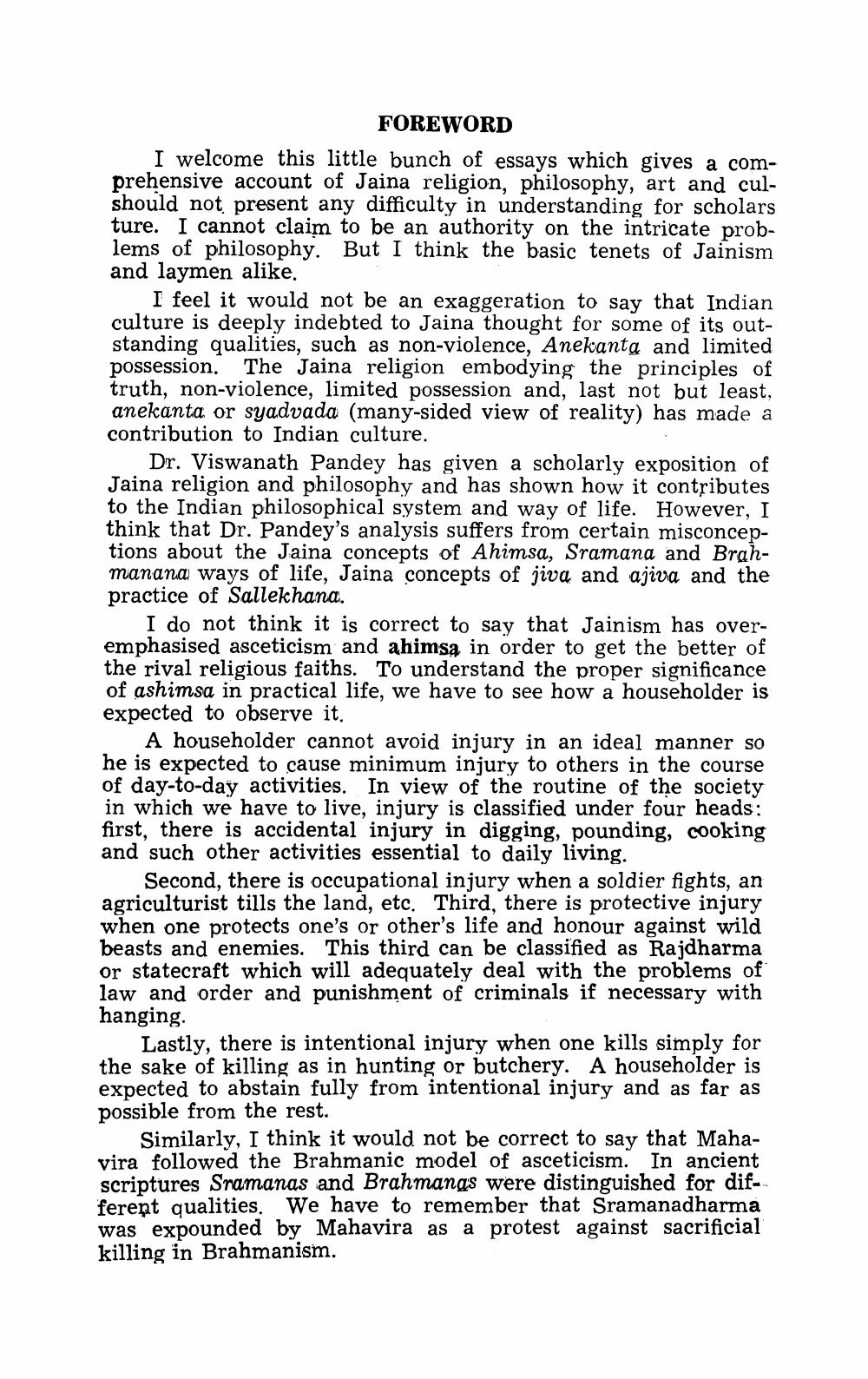Book Title: World Of Jainism Author(s): Vishwanath Pandey Publisher: Vishwanath Pandey View full book textPage 4
________________ FOREWORD I welcome this little bunch of essays which gives a comprehensive account of Jaina religion, philosophy, art and culshould not present any difficulty in understanding for scholars ture. I cannot claim to be an authority on the intricate problems of philosophy. But I think the basic tenets of Jainism and laymen alike. I feel it would not be an exaggeration to say that Indian culture is deeply indebted to Jaina thought for some of its outstanding qualities, such as non-violence, Anekanta and limited possession. The Jaina religion embodying the principles of truth, non-violence, limited possession and, last not but least, anekanta or syadvada (many-sided view of reality) has made a contribution to Indian culture. Dr. Viswanath Pandey has given a scholarly exposition of Jaina religion and philosophy and has shown how it contributes to the Indian philosophical system and way of life. However, I think that Dr. Pandey's analysis suffers from certain misconceptions about the Jaina concepts of Ahimsa, Sramana and Brahmanana, ways of life, Jaina concepts of jiva and ajiva and the practice of Sallekhana. I do not think it is correct to say that Jainism has overemphasised asceticism and ahimsa in order to get the better of the rival religious faiths. To understand the proper significance of ashimsa in practical life, we have to see how a householder is expected to observe it. A householder cannot avoid injury in an ideal manner so he is expected to cause minimum injury to others in the course of day-to-day activities. In view of the routine of the society in which we have to live, injury is classified under four heads: first, there is accidental injury in digging, pounding, cooking and such other activities essential to daily living. Second, there is occupational injury when a soldier fights, an agriculturist tills the land, etc. Third, there is protective injury when one protects one's or other's life and honour against wild beasts and enemies. This third can be classified as Rajdharma or statecraft which will adequately deal with the problems of law and order and punishment of criminals if necessary with hanging Lastly, there is intentional injury when one kills simply for the sake of killing as in hunting or butchery. A householder is expected to abstain fully from intentional injury and as far as possible from the rest. Similarly, I think it would not be correct to say that Mahavira followed the Brahmanic model of asceticism. In ancient scriptures Sramanas and Brahmangs were distinguished for different qualities. We have to remember that Sramanadharma was expounded by Mahavira as a protest against sacrificial killing in Brahmanism.Page Navigation
1 2 3 4 5 6 7 8 9 10 11 12 13 14 15 16 17 18 19 20 21 22 23 24 25 26 27 28 29 30 31 32 33 34 35 36 37 38 39 40 41 42 ... 132
